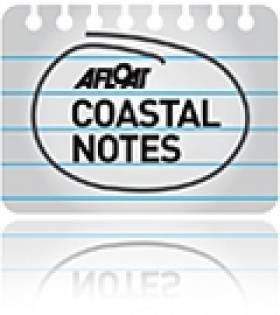Displaying items by tag: Maritime Heritage Gathering
Gathering of This Island Nation Explores Our Maritime Heritage
#MaritimeHeritage - The National Maritime Museum of Ireland (NMMI) in Dun Laoghaire recently hosted a two-day Maritime Heritage Gathering funded by the Department of Arts, Heritage and the Gaeltacht and supported by Dun Laoghaire Rathdown County Council and Gathering Ireland 2013.
Welcoming more than 100 participants from among 60 organisations from the island of Ireland and the UK was An Cathaoirleach Carrie Smyth of Dun Laoghaire-Rathdown County Council.
The diversity of participants ranged from maritime museum managers, historians, authors, genealogists, deep-sea divers, archaeologists, shore built heritage and inland waterways enthusiasts, former dockers, historic boat restorers, community development groups and Government agencies.
The maritime gathering recognised the need to share the common objective of raising the profile of a collective maritime heritage and highlight its tourism potential. It is the determination of locally funded museums, historical societies and individuals to preserve the historic, cultural and folklore memory of Ireland's 3,500 mile coastline, despite current economic circumstances, with the assistance of State agencies was emphasized.
The importance of making all things maritime more accessible to school children linking museums with local heritage groups, sailing clubs and utilising the internet and 3-D visual technology to develop virtual museums featured amongst a host of ideas from six expert groups.
Participants agreed to co-operate to develop national and trans-national projects through a common Maritime Heritage Platform sharing resources and supporting one another. Workshop discussion groups provided opportunities to exchange ideas under the following core topic headings:
• Future Development of Maritime Museums in Ireland
• Preservation of Historic Ships and Traditional Boats
• Developing the Research Capabilities of Irish Maritime Libraries and Archives
• Maritime Tourism Initiatives, Marketing and Communications
• Co-operation in Maritime Heritage Networks, Joint Projects and Special Exhibitions
Mr Jim Deenihan TD, Minister for Arts, Heritage and the Gaeltacht, said that historically Ireland had ignored its maritime heritage, but this is rapidly changing and the rising interest in genealogy actively promoted by his department through www.irishgenealogy.ie has created a new window of opportunity for positive developments in the maritime field.
The Minister was particularly impressed with the pro-active approach of the National Maritime Museum (home of the Maritime Institute of Ireland) in preserving its historic artefacts and unique 4,000 volume maritime library and archive. The fact that so many representatives came together for the very first time to find workable solutions to promote maritime heritage indicated a very strong statement of intent from the maritime heritage sector, which his department recognises.
Last year the National Maritime Museum was officially reopened by the museum's patron President Michael D. Higgins. The former Mariners Church where the museum is located has a primary objective in the promotion and development of a greater awareness of Irish maritime heritage, our historical seafaring figures and the role of shipping.
For six years the Mariners Church underwent an extensive structural renovation programme financed by Government grant aid. The renovation of the building has ensured that its distinctive architectural features and valuable artefacts and library are preserved for generations to come.
Maritime events, lectures, guided tours for schools, adult societies and special interest groups occur regularly. The venue also hosts civic, cultural and corporate events all year round. For further information visit: www.mariner.ie





























































